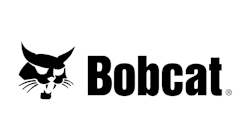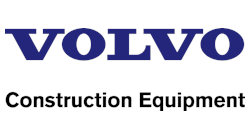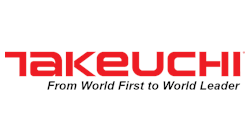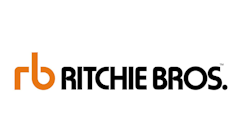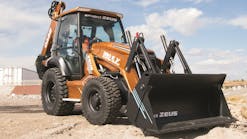“That one right there looks like one of those giant heads from Easter Island.”
“There’s one that looks exactly like my cat, Henry.”
We’ve all played that game in which we stare at the white puffy clouds in the sky and decide what the clouds look like. It was an exercise in imagination. So was playing with Legos, and I’m talking about the Legos when they were just simple building blocks and not elaborate models. There were no instructions on how to put them together. You built whatever your creativity could come up with.
“That one right there looks like one of those giant heads from Easter Island.” “There’s one that looks exactly like my cat, Henry.” We’ve all played that game in which we stare at the white puffy clouds in the sky and decide what the clouds look like. It was an exercise in imagination. So was playing with Legos, and I’m talking about the Legos when they were just simple building blocks and not elaborate models. There were no instructions on how to put them together. You built whatever your creativity could come up with. [text_ad] With each, there were certain limitations. The size of the clouds and how fast the wind was blowing. The finite number of the various sizes of Lego blocks. The amount of daylight. The connective strength of one Lego to another. They were all problems that were always worked around. If you were pretty good at either, you’re probably a good candidate to enter the Infrastructure Vision 2050 Challenge where the winner takes home $150,000. The challenge is to identify what you believe to be the most critical problem with the nation’s infrastructure and come up with a solution to fix it. The contest is being held by the Association of Equipment Manufacturers and crowdsourcing platform, HeroX. Here is the link to the press release on foresternetwork.com. On HeroX’s website, part of the overview of the contest offers this background:Why take notice of this challenge?
Imagine a world where you spend more time with family and people that matter most; where you can count on arriving at places to do things that are important to you; where you live with the optimism of a healthy economy; where you’re able to connect and communicate without being dropped (really!); or where you simply manage to avoid potholes in the road.
Now step back from the immediately personal and look at this issue from the context of the bigger picture.
From this vantage point, you can see confronting U.S. infrastructure problems carries massive implications as well. The United States has one of the ten strongest and largest economies in the world, but it’s falling behind on the overall quality of infrastructure. Think about what’s at stake for this Challenge in getting U.S. infrastructure back to the top of its game and what is needed to renew the nation’s commitment to getting there.
In today’s political climate, and particularly when it comes to infrastructure, investment isn’t always going to precede innovation. Sometimes, it takes that next big idea or solution to spur action, to show what’s scalable (and possible) with the right amount of support and funding in place.
This Challenge and the solutions it seeks is about so much more than just potholes. This is about a parent who needs to trust that her community roads will get her kids to school safely, and herself to work efficiently and on time. This is about a steel supplier who depends on efficient freight transportation systems to move his product to market. It’s about all of us, who take for granted a guaranteed supply of clean running water in our homes, or the electricity we use to charge our smartphones.
Again, why take notice of this Challenge?
Simply put: to make your life better.
Now $150,000 is a lot of money so I’m going to give you these links for all the information you’ll need. And if you just like to complain about the state of infrastructure in the United States, there’s a contest for you as well. Ten people will be awarded $250 and one person will win a $2,500 grand prize for the most creative complaints about infrastructure they encounter in their daily lives. And if you have something you need to get off your chest right away…go ahead and post it here. I’ll keep it between you, me, and the readers.With each, there were certain limitations. The size of the clouds and how fast the wind was blowing. The finite number of the various sizes of Lego blocks. The amount of daylight. The connective strength of one Lego to another. They were all problems that were always worked around.
If you were pretty good at either, you’re probably a good candidate to enter the Infrastructure Vision 2050 Challenge where the winner takes home $150,000. The challenge is to identify what you believe to be the most critical problem with the nation’s infrastructure and come up with a solution to fix it.
The contest is being held by the Association of Equipment Manufacturers and crowdsourcing platform, HeroX. Here is the link to the press release on foresternetwork.com.
On HeroX’s website, part of the overview of the contest offers this background:
Why take notice of this challenge?
Imagine a world where you spend more time with family and people that matter most; where you can count on arriving at places to do things that are important to you; where you live with the optimism of a healthy economy; where you’re able to connect and communicate without being dropped (really!); or where you simply manage to avoid potholes in the road.
Now step back from the immediately personal and look at this issue from the context of the bigger picture.
From this vantage point, you can see confronting U.S. infrastructure problems carries massive implications as well. The United States has one of the ten strongest and largest economies in the world, but it’s falling behind on the overall quality of infrastructure. Think about what’s at stake for this Challenge in getting U.S. infrastructure back to the top of its game and what is needed to renew the nation’s commitment to getting there.
In today’s political climate, and particularly when it comes to infrastructure, investment isn’t always going to precede innovation. Sometimes, it takes that next big idea or solution to spur action, to show what’s scalable (and possible) with the right amount of support and funding in place.
This Challenge and the solutions it seeks is about so much more than just potholes. This is about a parent who needs to trust that her community roads will get her kids to school safely, and herself to work efficiently and on time. This is about a steel supplier who depends on efficient freight transportation systems to move his product to market. It’s about all of us, who take for granted a guaranteed supply of clean running water in our homes, or the electricity we use to charge our smartphones.
Again, why take notice of this Challenge?
Simply put: to make your life better.
Now $150,000 is a lot of money so I’m going to give you these links for all the information you’ll need.
- AEM Launches Competition to Overhaul US Infrastructure Press Release
- Additional Information From HeroX’s Website
- ASCE Report Card for America’s Infrastructure
And if you just like to complain about the state of infrastructure in the United States, there’s a contest for you as well.
Ten people will be awarded $250 and one person will win a $2,500 grand prize for the most creative complaints about infrastructure they encounter in their daily lives.
And if you have something you need to get off your chest right away…go ahead and post it here. I’ll keep it between you, me, and the readers.


